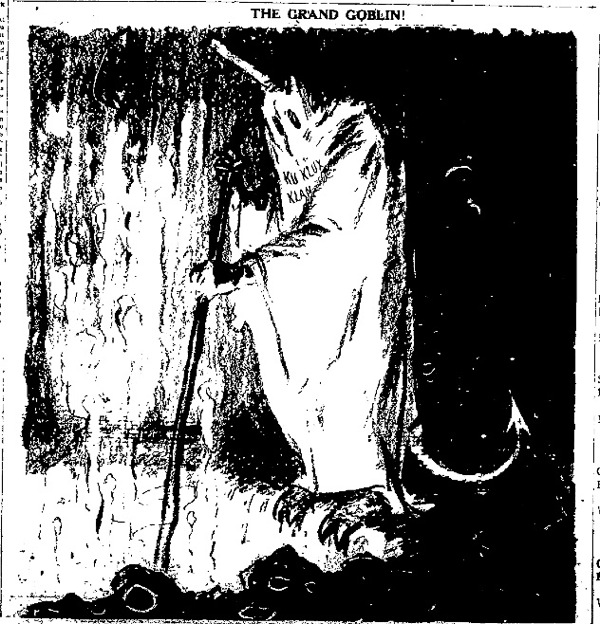Projects
Kampus Klan:
The University of Nebraska-Lincoln and the Ku Klux Klan, in the Early 1920sProject Editor: Ryan Treick, History 470: Digital History, Spring 2008 Table of Contents
National Klan
|
National Klan
The biggest terrorist organization that the United States has produced in its relatively young existence has been the Ku Klux Klan. This society of white supremacists formed out of former Confederate soldiers after the Civil War, however, it was half a century later that the KKK exploded into American life. The 1920s saw an enormous rise in membership. Between three to six million Americans had joined the Klan in all 48 states (). College campuses across the country were stomping grounds for Klan activity. From the Deep South to the Midwest, the Klan tried spreading their influence through the University forum.
Universities across the country were pressed by the public to take a side when it came to the Klan. In the south, the University of Georgia took a neutral stance regarding the Klan. When asked to support political platforms against the Klan in 1923, however, a third of the freshman debate defended the proposition that "the activities of the Ku Klux Klan as now practiced are of the best interests to the United States ()." Although the University of Georgia's position was neutral, students did take a position regarding Klan behavior, which helps explain the anti-catholic and racist fervor of 1920s America.
Anti-Catholicism and anti-Semitism were normal attitudes during the 1920s, and the Ku Klux Klan
exemplified those beliefs. At the University of Florida in 1923 Klansmen wrote fliers and protested Catholics from congregating on campus, and the school gave in to demands and forced Father Conoley to hold meetings off school grounds (). The Klan's influence on college campuses was able to stimulate the growing negative attitudes of Americans toward Catholics, and ultimately forced young members of the church off the University of Flordia grounds.
In Indiana, one of the Klan's strongest membership areas of the country, the local chapters tried
extensively to influence their reach on university campuses. At Valparaiso University in the summer of 1923, an idea was floating around of a "Klan Kollege." Although Valparaiso president Horace M. Evans shot down the idea of having a university run by the Ku Klux Klan, and the proposal was never seriously considered, there is evidence to suggest the Klan was trying to etablish itself within the college community ().
Although the Klan was able to gain in popularity throughout the 1920s, they were not immune from
investigation from the federal government. In September of 1921, about the same time the
University of Nebraska-Lincoln was dealing with its own University Klan, Attorney General Harry M. Daugherty was beginning to probe an investigation into the activities of the Ku Klux Klan. Daugherty noted that practically every branch of the Klan was under surveillance and that the government was looking for evidence that the KKK had planned to overthrow government, participated in fraud, or sent US mail for illegal purposes (). Representative Tague of Massachusetts led the investigation from Congress citing that there were "more than 100 acts of abduction, unlawful seizure, trial and punishment of free citizens ()." The investigation of the Klan even had the attention of President Warren Harding ().
The secret society that was the Ku Klux Klan took center stage during the 1920s, moving out of the South into the Midwest, onto college campuses, and involved in the politics of the day. Their beliefs and attitudes towards minorities and Catholics represented the mindset of many Americans during the 1920s, and as its influence spread throughout the country, places like Nebraska and the University of Nebraska-Lincoln were also touched by the organization's influence.

| "The Grand Goblin," , 19 September 1921. |
|

